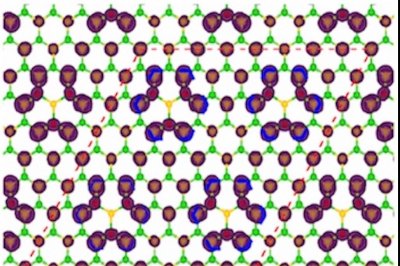Topic: Pulickel Ajayan
Quotes
Although the combination of these materials has been studied as a composite electrode by several research groups, it's the coaxial cable design of these materials that offers improved performance as electrodes for lithium batteries
Nanocables may improve lithium batteries Feb 12, 2009
The final numbers, when we measured how dark this material was, were more dramatic than we thought
Scientists create darkest material Jan 14, 2008
Researchers will need a wide range of tools to manipulate structures at the nanoscale, and this could be one of them
Nanotubes may become metalworking tools May 25, 2006
Researchers have long been interested in making composites of nanotubes and polymers, but it can be difficult to engineer the interfaces between the two materials
Flexible, conducting nanoskins developed Mar 01, 2006
The general concept ... could have many other applications, all the way from adhesive structures and Velcro-like materials to nanotube interconnects for electronics
Flexible, conducting nanoskins developed Mar 01, 2006
Pulickel Madhavapanicker Ajayan (Malayalam: പുളിക്കല് മാധവപ്പണിക്കര് അജയന്), known as P. M. Ajayan, is the Benjamin M. and Mary Greenwood Anderson Professor in Engineering at Rice University, and an adjunct professor of Material Sciences and Engineering at Rensselaer Polytechnic Institute.
Ajayan's research has been in the field of nanotechnology and has resulted in advances in carbon nanotube technology. In 1992, at the NEC Fundamental Research Laboratory in Tsukuba, Japan (the lab of Sumio Iijima, the discoverer of nanotubes), he teamed with Thomas Ebbesen to develop the first method for making macroscopic quantities of nanotubes. They demonstrated that nanotubes can be produced in bulk quantities by varying the arc-evaporation conditions. The experiment involved placing two graphite rods millimeters apart, and wiring them to a power supply. As 100 amperes of current sparked between the rods, hot plasma was created by the vaporization of carbon. Some of this plasma underwent condensation and formed nanotubes.
Ajayan’s research interests are mainly focused on the synthesis and characterization of one-dimensional nanostructures with special emphasis on carbon nanotubes, with more than 3000 citations for his work in this area. He, along with Vinod P. Veedu, Anyuan Cao and Mehrdad N. Ghasemi Nejhad have been awarded a Guinness World Record for creating the smallest nanotube brushes with bristles. According to a Science Watch Analysis, he is the 7th most cited author in Nanotechnology for the period of 1992-2002. In August 2007, he was in the news again for collaborating with several other researchers on the development of the world's first paper battery, which utilizes carbon nanotubes embedded within paper. In a brief interview with Discover Magazine, Ajayan stated he believes the paper battery will have many important future applications in industry and medicine. In 2008, Pulickel Ajayan's team created the darkest material known to man — a carpet of carbon nanotubes that reflects only 0.045% of the light.
It uses material from the Wikipedia article "Pulickel Ajayan."





